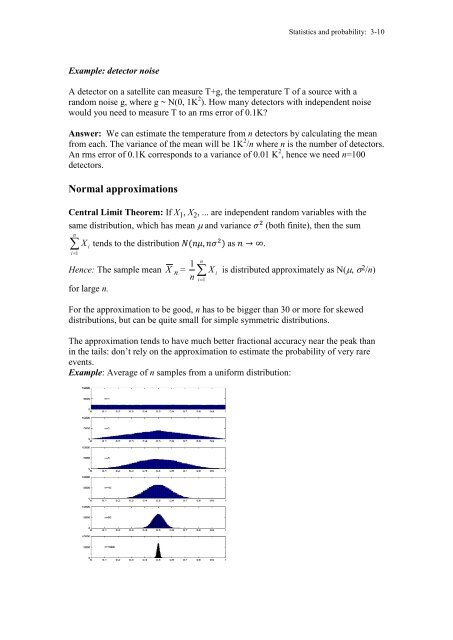3. Continuous Random Variables
3. Continuous Random Variables
3. Continuous Random Variables
Create successful ePaper yourself
Turn your PDF publications into a flip-book with our unique Google optimized e-Paper software.
Example: detector noise<br />
Statistics and probability: 3-10<br />
A detector on a satellite can measure T+g, the temperature T of a source with a<br />
random noise g, where g ~ N(0, 1K 2 ). How many detectors with independent noise<br />
would you need to measure T to an rms error of 0.1K?<br />
Answer: We can estimate the temperature from n detectors by calculating the mean<br />
from each. The variance of the mean will be 1K 2 /n where n is the number of detectors.<br />
An rms error of 0.1K corresponds to a variance of 0.01 K 2 , hence we need n=100<br />
detectors.<br />
Normal approximations<br />
Central Limit Theorem: If X1 , X2 , ... are independent random variables with the<br />
same distribution, which has mean � and variance (both finite), then the sum<br />
n<br />
�<br />
i�1<br />
X i<br />
tends to the distribution as .<br />
Hence: The sample mean X n = �<br />
i�<br />
for large n.<br />
1<br />
n<br />
n 1<br />
X i<br />
is distributed approximately as N(�, � 2 /n)<br />
For the approximation to be good, n has to be bigger than 30 or more for skewed<br />
distributions, but can be quite small for simple symmetric distributions.<br />
The approximation tends to have much better fractional accuracy near the peak than<br />
in the tails: don’t rely on the approximation to estimate the probability of very rare<br />
events.<br />
Example: Average of n samples from a uniform distribution:



